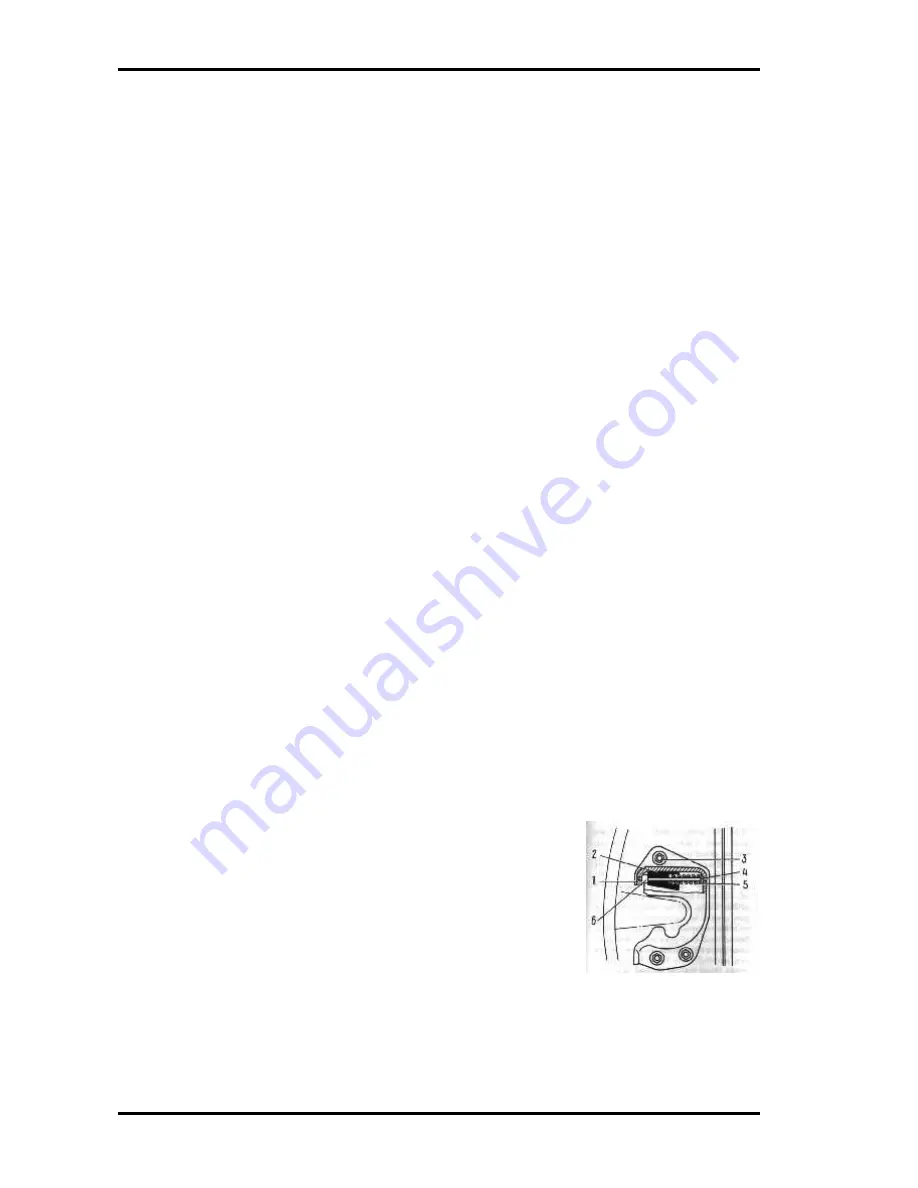
Lada Niva Manual - Maintenance
Page 32
Minor chipping of paint on the car body should be timely sanded and coated with the paint
contained in the tin furnished with the car.
In case corrosion of the car body parts is detected (corrosion traces, local paint blisters, etc.),
take necessary measures to eliminate corrosion and prevent its further spreading.
To facilitate examination of boxed spaces of the front fenders, the shields with weatherstrips
are made detachable.
To retain lustre of the body paint- work, particularly of the cars kept outdoors, regularly
polish the paint coating with the use of polishing pastes or wax compounds.
To ensure prolonged shining of the body surfaces, do not leave the car under the sun rays for
a long period of time; prevent acids, soda solutions, brake fluid and gasoline from getting on
the painted surfaces.
To prevent stains on the paint coating under the fuel tank access flap caused by spilled
gasoline, wipe the surface with clean dry rags before and after the fuel servicing.
In the course of operation the car underbody coating is attacked by gravel, sand and salt. As a
result, the anticorrosion compound and primer come off, and the exposed metal gets corroded.
Therefore regularly check the condition of the car underbody coating and timely recondition
the damaged areas
.
Clean the chrome-plated parts with soft rags and petrolatum. Wipe the plastic parts with
wet rags. It is not recommended to use gasoline or solvents; otherwise, the plastic parts will be
tarnished.
Use soft linen rags or chamois leather to clean the glasses. To clean heavily soiled glasses first
wash them with water solution of HMMCC-Æ1 liquid or Glass Autocleanser-2 (30 cm3 per
litre of water).
Never use gasoline or solvents to clean the body interior upholstery made of artificial leather.
Use neutral soap with water for the purpose, then wipe the surfaces dry with soft rags or
chamois leather. Simultaneously thoroughly wipe with wet rags the rubber weatherstrips and
the door parts in contact with them.
Periodically, depending on the specific conditions of the operation (very cold climate, dusty
roads, atmospheric effects during long parking periods), lubricate the following parts and
units: - door lock keyholes;
(a)
in hot weather with graphite powder;
(b)
in cold weather, particularly after washing, with aerosol lubricant BTB-1: as a
preliminary, dry the lock keyholes with compressed air;
Door hinges, hood lock re- lease cable and seat hinges, with engine
oil; friction surfaces of the door checks and the fuel tank flap hinge
and spring, with aerosol lubricant BTB-1; - seat slides, with grease
cDMOn-l ; pin 4 (Fig. 72), spring 5 and points of contact of block
2 with door lock striker plate 1, with grease cDMOn-1 after
disassembling the striker plate and washing its parts with gasoline.
The car body doors should open and close easily. If the door
closes with difficulty or loosely, adjust the position of the door
lock striker plate. Prior to beginning the adjustment, outline the position of striker plate 1 on
the car body pillar with a pencil. If the door is hard to close, loosen bolts 3, move the striker
plate outward and tighten the bolts. If the door closes loosely, move the striker plate inward.
If the door sags in closing, raise the striker plate, and on the contrary, lower it, if the door
Fig 72. Door lock striker plate.
1-
striker plate, 2- block, 3, bolt, 4- pin,
5- spring, 6 bushing.

















